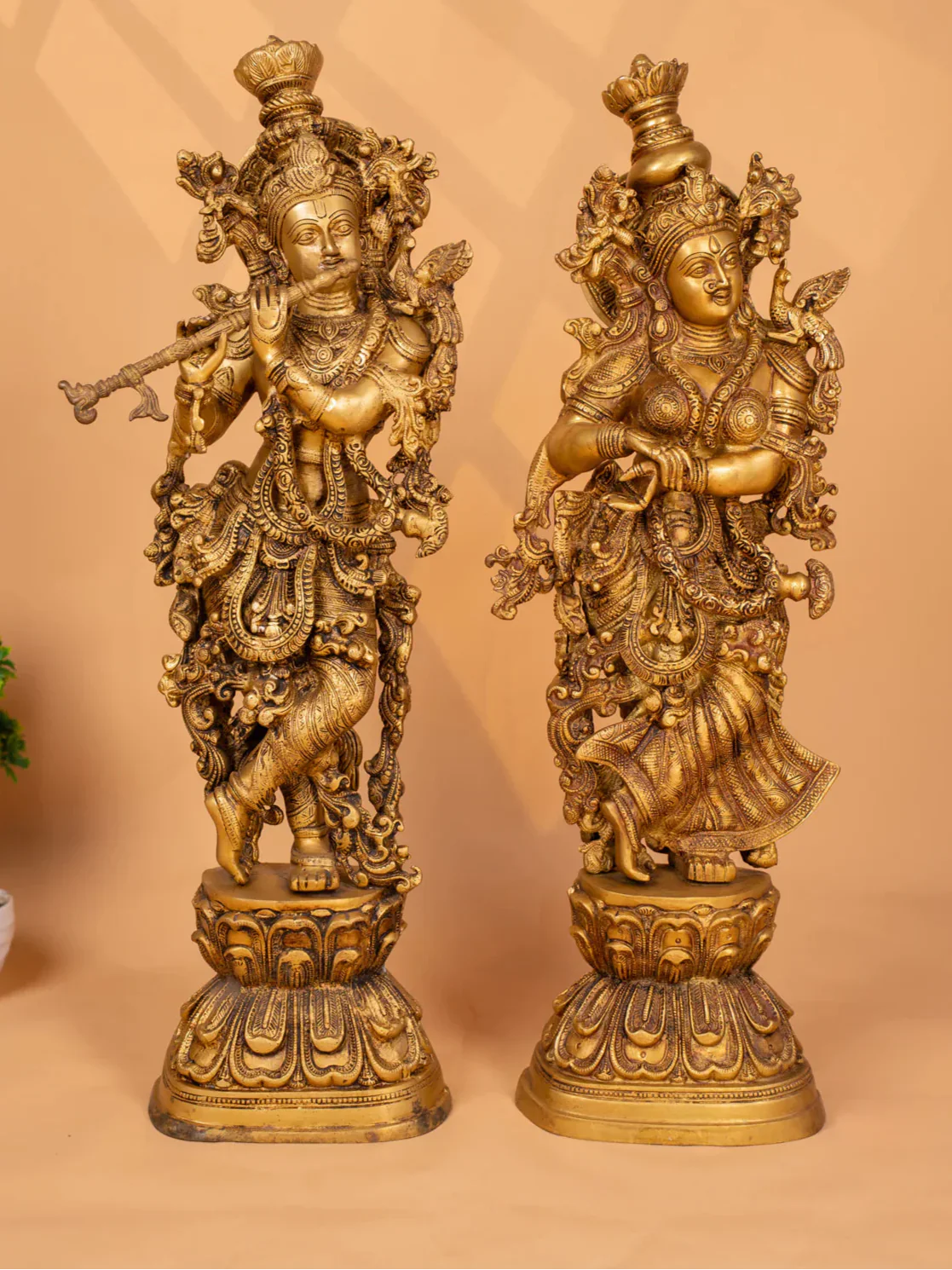About Panchaloha Idols
Panchaloha Idols
Panchaloha (pronounced "Panchaloha") refers to idols or statues created from an alloy of five metals: gold, silver, copper, zinc, and iron. The term "Panchaloha" is derived from two Sanskrit words, "Pancha" meaning five and "Loha" meaning metal. These idols hold significant religious, spiritual, and cultural importance, especially in the temples and homes across South India. Panchaloha idols are renowned for their unique combination of metals, which are believed to embody the five basic elements of nature — Earth, Water, Fire, Air, and Ether (Space).
Origin and Historical Significance
The tradition of making Panchaloha idols dates back to the ancient civilizations of India, where metalworking and sculpture played a prominent role in religious rituals and temple worship. The Chola dynasty, which ruled southern India from the 9th to the 13th centuries, is particularly well-known for its contributions to this craft. The Cholas not only built grand temples but also created some of the finest examples of Panchaloha sculptures, many of which can still be found in South Indian temples today.
Panchaloha idols are often associated with Vedic rituals and Agama Shastra, the ancient scriptures that guide temple practices. According to these texts, the use of five metals in an idol helps in aligning the spiritual energies of the deity with those of the worshipper. The combination of the metals is believed to enhance the idol's ability to absorb and radiate cosmic energy.
The Five Metals
Each of the metals used in Panchaloha idols has its own symbolic significance, and each corresponds to one of the five elements of nature:
-
Gold (Fire) – Symbolizes divine energy and purity, often associated with the sun.
-
Silver (Water) – Represents purity, clarity, and the nurturing aspect of nature.
-
Copper (Earth) – A grounding metal, symbolizing stability and physicality.
-
Zinc (Air) – Associated with communication, intellect, and mental clarity.
-
Iron (Ether) – Represents the ethereal space or void, symbolizing cosmic balance.
This combination of metals is believed to bring about harmony and balance in the spiritual and physical realms, making the idols powerful and revered objects of worship.
Crafting Process
The process of creating a Panchaloha idol involves a technique known as lost-wax casting (Cire Perdue). This is an ancient method where a model of the idol is made using a wax-based material. The wax model is then coated with a clay mixture, which hardens. The wax is melted away, and the resulting mold is filled with the Panchaloha alloy. After cooling, the clay shell is removed, leaving behind the finely detailed statue.
This process is highly intricate and requires skilled craftsmanship, often taking several weeks to complete. The artisans who create these idols are typically from regions such as Swamimalai, which has a centuries-old tradition of metalworking. Swamimalai, a town in Tamil Nadu, is especially famous for producing some of the finest Panchaloha idols in the world.
Religious and Cultural Significance
Panchaloha idols are not just decorative art but are considered sacred objects in Hinduism. They are typically worshipped in temples and homes, with the belief that they embody the divine presence of the deities they represent. The idols are commonly used in rituals like abhishekam (ritual bathing) and puja (worship), where they are anointed with sacred substances such as milk, honey, and sandalwood paste.
The use of Panchaloha idols is closely linked to the Vastu Shastra (Indian architecture) and Jyotisha (astrology), where they are believed to bring positive energy and remove negative influences from the surroundings. People often place them in temples, homes, or workplaces for prosperity, health, and spiritual well-being.
Unique Features and Variations
Panchaloha idols come in various forms, from depictions of gods and goddesses to abstract representations. The design and detailing of these idols are typically in accordance with traditional temple art forms, following the guidelines of Agama Shastra. The most common deities found in Panchaloha are Lord Shiva, Lord Vishnu, Goddess Lakshmi, and Lord Ganesha, although idols of other deities are also crafted.
While most Panchaloha idols are created in the lost-wax process, artisans may also use other methods such as casting or molding, depending on the size and intricacy of the idol. Despite the techniques, the use of five metals remains consistent in ensuring the purity and spiritual power of the idol.
Modern Use and Popularity
Today, Panchaloha idols are not only an integral part of traditional worship but are also popular as collectibles and home decor items. They are commonly sold in markets and online platforms like Vritti.store, which specializes in authentic, handcrafted arts and handicrafts. The revival of traditional metalworking techniques, particularly in regions like Swamimalai, has led to the continued production of these idols, ensuring that they remain a vital part of Indian cultural heritage.
Preservation and Care
Given the spiritual significance and historical value of Panchaloha idols, proper care and maintenance are important. To preserve the natural patina and integrity of the metal, it is recommended to clean the idols gently using a soft cloth. Avoid harsh chemicals and detergents that may damage the surface. Regular worship and ritual offerings are believed to enhance the divine energy emanating from the idols.

